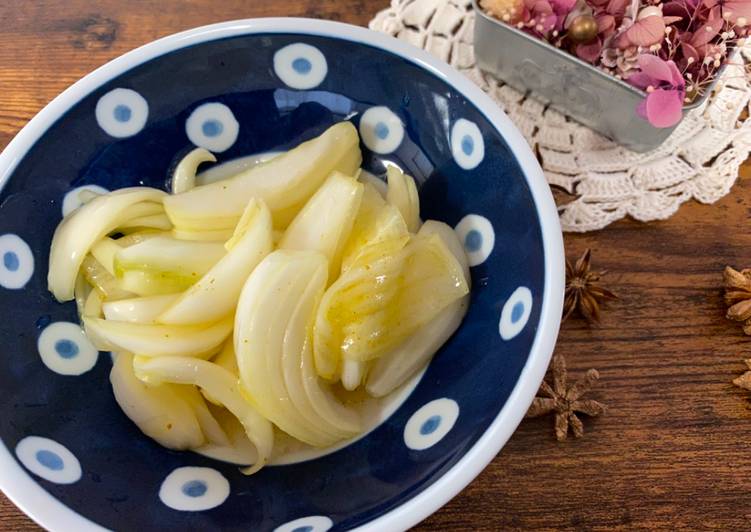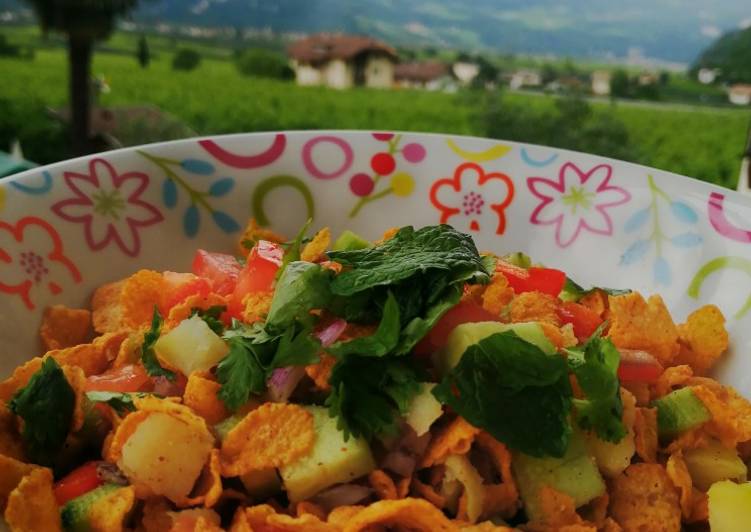
Hey everyone, hope you’re having an incredible day today. Today, I will show you a way to prepare a special dish, ‘fukujinduke’ pickles. One of my favorites food recipes. This time, I’m gonna make it a bit unique. This will be really delicious.
Fukujinzuke (福神漬け) is a kind of pickle dish but it is not fermented. Daikon, eggplant, sword beans, lotus root, cucumber, etc. are chopped into small thin pieces, then cooked and marinated in a sauce that is made of soy sauce, mirin and other seasonings. 'Fukujinduke' Pickles Hiroko Liston Melbourne, Australia 'Fukujinzuke' is a very popular condiment in Japan. Curries are often served with these crunchy pickles. 'Fukujinduke' Pickles 'Fukujinzuke' is a very popular condiment in Japan. Curries are often served with these crunchy pickles.
‘Fukujinduke’ Pickles is one of the most favored of current trending foods in the world. It’s easy, it is quick, it tastes delicious. It is enjoyed by millions daily. ‘Fukujinduke’ Pickles is something which I have loved my entire life. They are nice and they look fantastic.
To get started with this recipe, we must first prepare a few ingredients. You can have ‘fukujinduke’ pickles using 10 ingredients and 7 steps. Here is how you cook it.
The ingredients needed to make ‘Fukujinduke’ Pickles:
- Take 1 cup Daikon slices
- Take 1 cup Eggplant slices
- Make ready 1 cups Lotus Root (Renkon) slices *read ‘Method 4’ for how to prepare
- Make ready 1 teaspoons Salt
- Take 1 small piece Ginger *finely chopped
- Get 2-3 cm Kombu
- Prepare <Marinade>
- Make ready 2 tablespoons Soy Sauce
- Take 2 tablespoons Sugar
- Make ready 1/2 tablespoon Rice Vinegar
It is a kind of non-fermented pickles, and consists of seven vegetables such as daikon radish, eggplant, sword bean, lotus root, cucumber, perilla seeds, shiitake mushroom, or white sesame, which are finely chopped and pickled in the flavored. Fukujinzuke (福神漬) is a condiment in Japanese cuisine, commonly used as relish for Japanese curry. In fukujinzuke, vegetables including daikon, eggplant, lotus root and cucumber are finely chopped, then pickled in a base that is flavored with soy sauce. The end result has a crunchy texture.
Instructions to make ‘Fukujinduke’ Pickles:
- Keep skin of Daikon for crunchy texture, but Eggplant skin needs to be removed, otherwise you will have yucky coloured pickles!!! Cut lengthways into 2-3cm in diameter sticks, then cut them into 4-5mm thin slices.
- Place Daikon and Eggplant slices in a bowl, add Salt, mix well, then set aside for 1 hour OR overnight in the fridge if possible. Plenty of water should come out. Drain well and squeeze to remove excess salty water.
- Combine all the marinade ingredients in a small bowl. Heat in the microwave so that Sugar will dissolve well.
- Lotus Root needs to be blanched. Remove skin, clean, cut lengthways into 2-3cm in diameter sticks, then cut them into 4-5mm thin slices. Blanch in the boiling salted water with 1-2 teaspoons Rice Vinegar for 2-3 minutes, then drain well.
- Place all vegetables, finely chopped Ginger and Kombu in a right size jar or container. I have found a ziplock bag is the easiest option.
- Remove the air, so that the vegetable pieces can stay in this minimal amount of marinade. Marinate in fridge for 1-2 days before you enjoy. (*This time I doubled the amount.)
- *Mix with Macadamia Nuts: Crunchy ‘Fukujinzuke’ and crunchy Roasted Macadamia Nuts go well together.
In fukujinzuke, vegetables including daikon, eggplant, lotus root and cucumber are finely chopped, then pickled in a base that is flavored with soy sauce. The end result has a crunchy texture. Nukazuke also refers to both the pickles and the pickling method. The vegetables are preserved in a brown pungent mash of roasted rice bran (Nuka 糠), salt, and kombu, which needs to be turned by hand every day. The pickling can last from a few hours to several months, resulting in a crispy, salty, and slightly yeasty pickles.
So that’s going to wrap it up with this special food ‘fukujinduke’ pickles recipe. Thanks so much for your time. I’m confident that you will make this at home. There’s gonna be more interesting food at home recipes coming up. Remember to bookmark this page in your browser, and share it to your loved ones, colleague and friends. Thanks again for reading. Go on get cooking!

